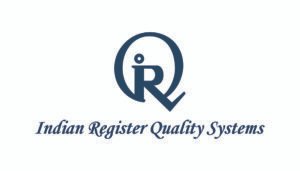7 simple steps to Acquire An ISO 14001 Certification in India
July 23, 2021 2025-02-22 12:487 simple steps to Acquire An ISO 14001 Certification in India

7 simple steps to Acquire An ISO 14001 Certification in India
An Overview by Team IRQS - ISO Certification Body
Toggle7 simple steps to Acquire An ISO 14001 Certification in India
So what’s all this buzz about ISO 14001 Certification and who needs it? There’s no simple answer to this. In short, this is an international standard that you’ll have to follow while designing and implementing EMS (Environmental Management System).
As the name suggests, ISO regulates this certification. Multiple ISO member countries around the globe have agreed to this standard before it was finally updated and released.
This has allowed ISO 14001 certification to have global recognition. In the year 2017, more than 2,75,000 certifications were issued and this number has only risen. So let’s cut to the chase.
Assuming your organization needs to file an EMS, what are the steps that’ll lead you up to an ISO 14001 certification. That’s exactly what you’ll learn here along with everything there’s to know in between.
Steps Involved In Acquiring ISO 14001:
We are about to see 7 simple steps involved in acquiring an ISO 14001 certification. You’ll have to start by learning and doing your research about this global standard and you’ll be concluding the process by registering your audit options.
Step 1: Gathering In-depth ISO 14001 Knowledge
Knowledge about EMS and the requirements of ISO 14001 is important. You’ll first have to double-check if your business qualifies for the certification.
EMS: Environmental Management System is a growing interest for various companies. EMS encompasses the methods and means to manage your company’s products, services, public opinion, societal impact, and employee safety.
Requirements Of ISO 14001: Before you apply, you have to check if your documented EMS evidence is meeting the required standard. But the standard dictates no criteria over your modus operandi and how you record your evidence.
Step 2: Executing Gap Analysis & Initial Environmental Review
Initial Environment Review: If you’re trying to formulate an EMS, performing an initial environmental review is your first step. This tells you the progress of your organization and creates a road map for its future.
You’ll first have to assess your previous environmental issues. Following which you’ll have to check if any of your regulations have an operational impact. Finally, create an outline of how your current operations are being managed.
Gap Analysis: A gap analysis would tell you how much your current arrangements differ from the ISO 14001 standard. Once you identify these “gaps”, you can formulate an accurate plan that aligns with the standard.
Step 3: Educating Your Employees & Organizational Members
Acquiring ISO 14001 Certifications in India would involve a lot of audits and reviews. These audits will not just be focused on your company on the whole. The individual employees from your organization might also get questioned.
They will get examined to check if they have enough knowledge and skills to achieve the intended results. Their “awareness” and “communication” abilities would be an auditor’s major concerns. If your employees aren’t trained, kept up to date, or proven incompetent, your performance in the audit would suffer.
Step 4: Curating Required Documents
Obviously, ISO 14001 is an extensive process that involves a lot of documentation to be in place. You must file your EMS manual and procedures in these documents.
Before you begin to document, you must take a look at your current process. You must then redesign them to address all the standard requirements that are put forth. After documenting them, you must begin to modify all your current processes that are not in alignment.
Here’s a short list of requirements:
- Scope Of EMS
- Environmental Policy
- Identification and Evaluation of Environmental Aspects
- Environmental Objectives
- Operational Control Procedures
- Procedure for Emergency Preparedness and Response
- List of Interested Parties
- Address risks and opportunities
- Competence records
- Evidence of Communication
- Monitoring Performance Information
- Compliance Evaluation Record
- Compliance Obligations Record
- Internal Audit Programme and Results
- Management Review Results
- Nonconformities and Corrective Action
Step 5: Improve & Implement Your EMS
As we just discussed, after documentation, you’ll have to standardize your EMS inside your organization. This involves educating your employees to make them follow the procedures.
They must also collect records (proof of adherence) which will, in turn, help you make improvements to the system. But make no mistake, this would need 3 months or more. During this period, you’ll have to implement your EMS and collect records that you did so.
Step 6: Auditing & Recording Your EMS Performance
ISO 14001 Certifications in India consist of a lot of auditing. But to save yourself time and cost, you’ll have to focus on keeping this process as efficient as possible.
So before you go for the final auditing, make sure you perform a lot of internal audits. Ask yourself “Is my EMS working?” and if not, find ways to improve it. So when a registrar comes for a final audit, you can be prepared.
Step 7: Apply For The Registration
If you’re here, congrats. Let’s now talk about performing your final registration audit. For this, you’ll have to select a registrar who will then perform regular surveillance audits thereafter.
The task of this registrar is simple. He’s going to check if your EMS aligns with the ISO 14001 certification standard.
If certain pieces of your EMS seem to misalign, the auditor will be issuing a “Non-Conformance” document. Once you correct all your nonconformances, that’s pretty much it. You’ll be issued an ISO 14001 certification.
Conclusion
The time and cost that it takes for you to achieve a successful registration are highly subjective. The more prepared you and your employees are, the faster you’ll receive the certification.
You can also take mentorship from a company that has also gone through the process. This will help you dodge away from making a lot of expensive mistakes.
The chances of you getting an ISO 14001 certification in India with no nonconformance history is really low. But you can reduce their number. Hire an auditor on your own and perform as many internal audits as you possibly can.
Make sure he’s qualified to identify nonconformances. Work on resolving them and educate your employees on the same. This will certainly increase your odds.
Recent Posts
Follow us on
Categories
ISO Certification Body in India | Trusted Certification Experts in India
IRQS is a leading ISO certification body with 25+ years of experience, offering ISO certification and training services to over 5,000 clients worldwide.
ISO 9001 Certification Body - Best Service & Lowest Price
Apply for ISO Certification in India. IRQS is one of the leading Certification bodies that offers internationally recognized ISO certification
Cities we cater for ISO Certifications in India: iso certification in india, iso certification body, iso certification in Mumbai, iso certification in Bangalore, iso certification in Ahmedabad, iso certification in Bhavnagar, iso certification in Kolkata, iso certification in Chennai, iso certification in Delhi, iso certification in Goa, iso certification in Hyderabad, iso certification in Kandla, iso certification in Kochi, iso certification in Pune, iso certification in Bhopal, iso certification in Vadodara, iso certification in Tiruchirapalli, iso certification in Visakhapatnam, iso certification in Port Blair, iso certification in PARADIP, iso certification in Surat, iso certification in JAMNAGAR, iso certification in KAKINADA, iso certification in COIMBATORE, iso certification in TRICHY
By Certification: ISO 9001 certification, Quality Management System (QMS) certification, ISO 14001 certification, Environmental Management Systems (EMS) certification, ISO 45001 certification, Occupational Health and Safety Management Systems (OHSMS) certification, ISO 50001 certification, Energy Management Systems (EnMS) certification, ISO 27001 certification, Information Security Management Systems (ISMS) certification, ISO 27701 certification, Privacy Information Management System certification, FAMI-QS Certification, Feed Additives and Pre-mixtures Quality System Certification, BRCGS certification, Brand Reputation through Compliance Global Standards, IATF 16949 certification, Automotive Quality Management Systems Certification, ISO 22000 certification, Food Safety Management Systems (FSMS) certification, FSSC 22000 Certification, Food Safety System Certification (FSSC) certification, Ayush Certification, Ayush Mark Certification, fssai third party audit, food safety auditing, ISO 21001 Certification, Educational Organization Management System (EOMS) certification, ISO 28000 Certification, Security Management System for Supply Chain (SCSMS) certification, ISO 13485 Certification, Medical Device Quality Management System Certification, SOC 1 Report, SOC 2 Report, IMS certification, integrated management system certification, GDPR Certification, general data protection regulation certification, SOC 2 Certification, SOC 2 Compliance, service organization controls certification, VAPT certification, Vulnerability Assessment and Penetration Testing Certification, ISO 22301 Certification, bcms certification, Business Continuity Management Systems certification
By Sector: ISO Certification for Engineering & Manufacturing, ISO Certification for Automotive, ISO Certification for Health Care, ISO Certification for Food & Beverages, ISO Certification for IT & ITES, ISO Certification for Marine, ISO Certification for Education, ISO Certification for Oil & Gas, ISO Certification for Construction, ISO Certification for Energy, ISO Certification for Retails, ISO Certification for Defence, ISO Certification for Medical Device, ISO Certification for Mining, ISO Certification for Financial Services
By Training: ISO 9001 training, ISO 9001 Lead Auditor Training, QMS training, ISO 14001 training, ISO 14001 Lead Auditor Training, ISO 45001 Training, ISO 45001 Lead Auditor Training, ISO 27001 Training, ISO 27001 Lead Auditor Training, ISO 22301 training, ISO 22301 Lead Auditor training, ISO 9001 Internal Auditor, ISO 14001 Internal Auditor, ISO 45001 Internal Auditor, Integrated Management Systems (IMS) Training, IATF Internal Auditor Training, FSSC 22000 Internal Auditor Training, ISO 22000 Internal Auditor Training, ISO 50001 Internal Auditor Training, ISO 21001 Internal Auditor Training, ISO 13485 Internal Auditor Training, ISO 27001 Internal Auditor Training, ISO 28000 Internal Auditor Training, IRCA accredited training
By Sustainability: esg services, esg solutions, esg certification courses, sustainability certification courses, life cycle assessment certification, sustainable development certificate, life cycle analysis certification, sustainability certification program, sustainability verification & Validation, sustainability report assurance, sustainability assurance, sustainability reporting verification & Validation, sustainable claim verification & Validation, green house emissions & assurance, pas 2050 certification, pas 2050 verification, carbon footprint of products, carbon footprint solutions, iso 14067 certification, iso 14067 verification & Validation, iso 14064 certification, iso 14064 verification & Validation, carbon footprint verification, ghg verification, iso 14064 certification course, iso 14064 lead Implementor training, iso greenhouse gas standards, pas 2060 certification, pas 2060 carbon neutral certification, pas 2060 verification, carbon neutrality standard & certification, carbon neutral verification, carbon footprint management, carbon emission management, pas 2080 certification, carbon management in infrastructure, pas 2080 verification, greenhouse gas emissions management, iso 26000 training, social responsibility management system, csr management system, social responsibility lead implementor, life cycle assessment course, life cycle assessment certification, lca course, life cycle analysis course, life cycle assessment training, iso 14040 training, iso 14044 training, life cycle assessment training program, iso 14064 certification, iso 14064 training, iso 14064 certification course, iso 14064 lead auditor training, iso 14067 training, iso 14067 certification, product carbon footprint lead implementor, ghg accounting, green house gas accounting, lead verifier certification program, iso ghg accounting, sustainability reporting, esg reporting, gri standards, csr reporting, gri reporting standards, global reporting initiative standards, gri sustainability reporting, sustainability reporting in line with gri standards, business responsibility and sustainability reporting, brsr training, iso 20400 training, sustainable procurement awareness, sustainable procurement, iso 27001 lead auditor, iso 27001 lead implementer, iso 27001 implementer, water footprint management, iso 14046 training, water footprint verification, carbon border adjustment mechanism, cbam regulation, cbam training, AA1000 assurance, reasonable level assurance, limited level assurance, ISAE3000 Assurance, ISAE3410 Assurance, LCA Critical review, CDP verification and validation, BRSR assurance, Zero waste to landfill certificate, responsible plastic management, Scope 1, 2, and 3, Upstream and downstream waste management, Marine Stewardship Council responsible fishing standard
Other Services: Testing Services, HKC and EU Certification, Ship Recycling Regulations, Ship Recycling Training, Coal Inspection Testing, Coal Sampling and Testing, green audit, Environmental Audit, Cyber Security, ResponsibleSteel
List of Top ISO Certification Companies in India
List of iso certification body in india, Top 10 ISO certification bodies in India, ISO certification body list, List of ISO 9001 Certification bodies in India, Who can issue ISO certification in India, ISO certification list, ISO certification for individuals, ISO certification full form





